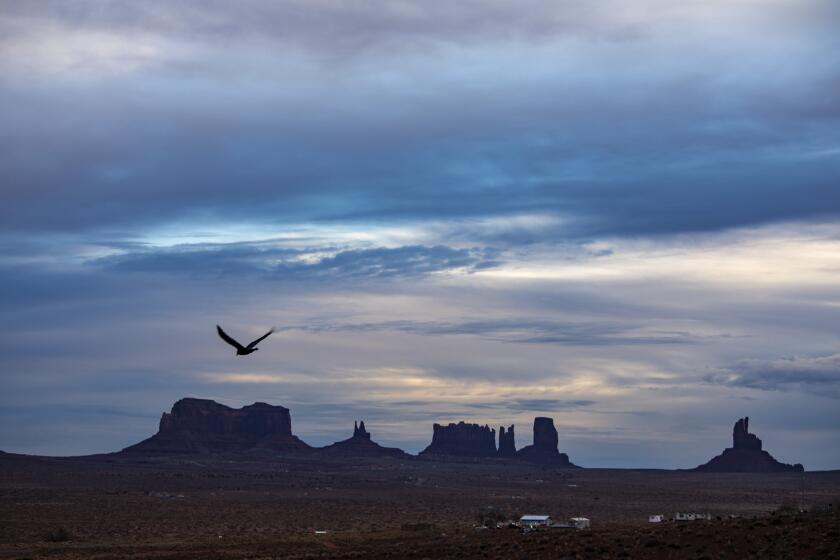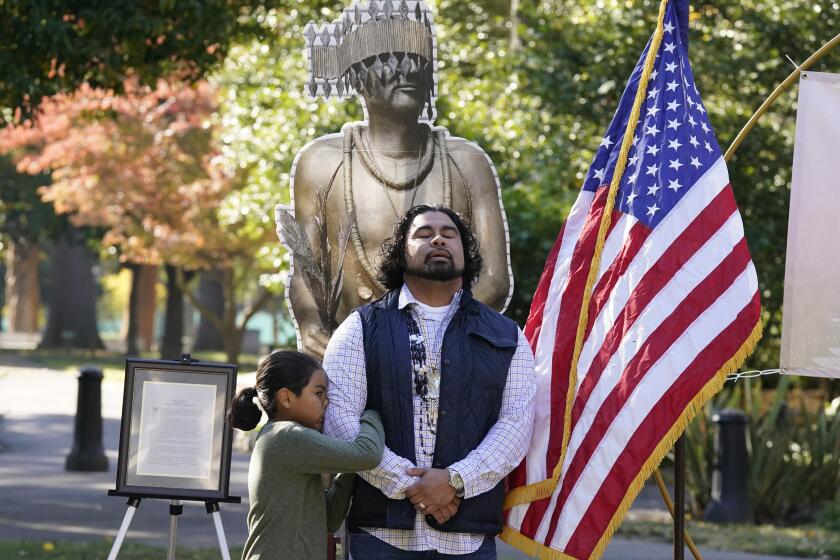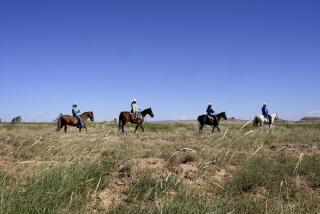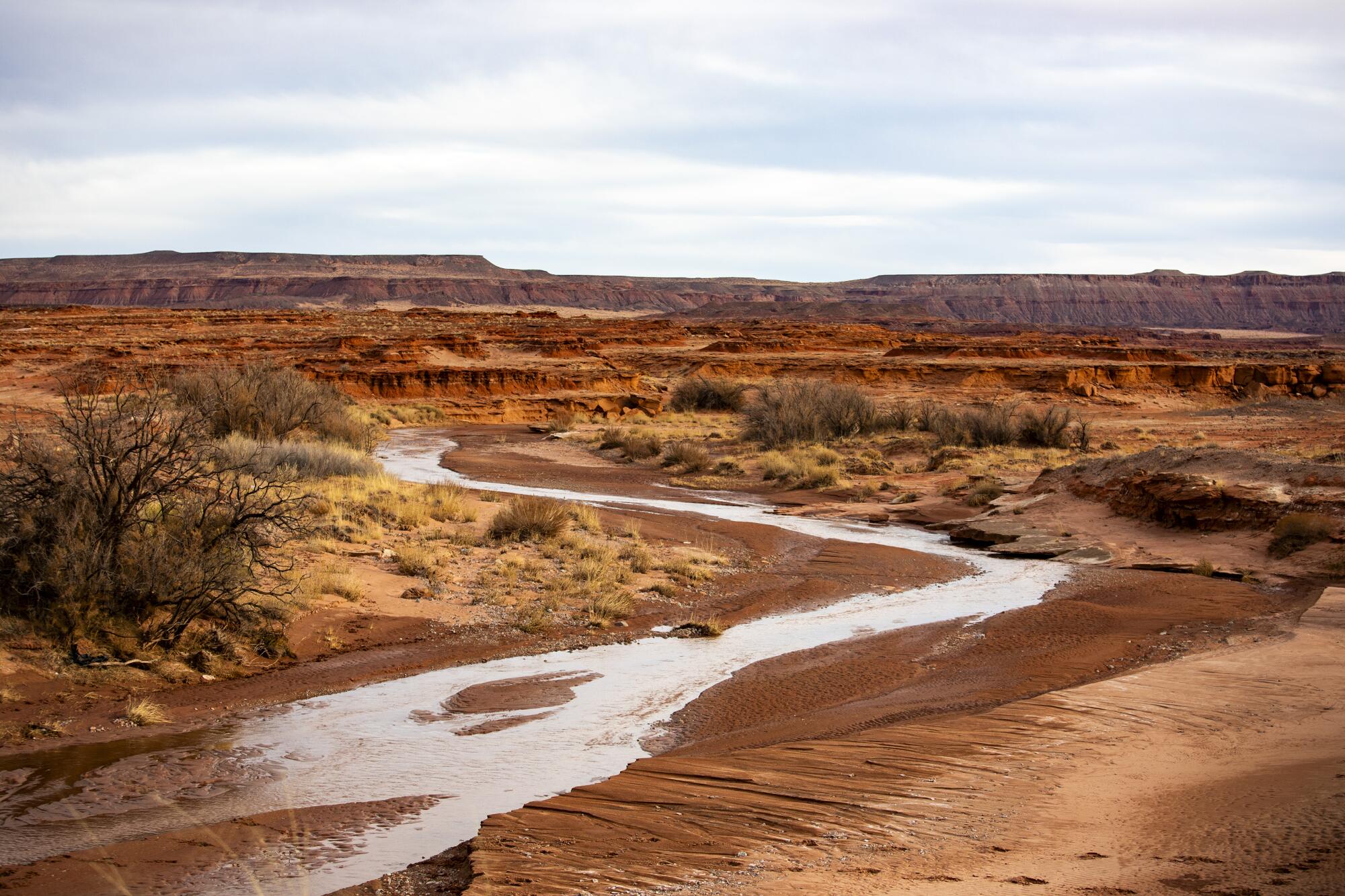
- Share via
Irene Yazzie can’t think of anyone who lives within 10 miles of her farm in the Navajo Nation who has drinking water flowing into their homes, hers included. In the far reaches of the reservation in Northeastern Arizona, near where the red-rock buttes of Monument Valley rise above the desert floor, indoor plumbing can feel like a luxury.
“I don’t know that people understand how hard of a life we have here,” said Yazzie, 71.
Help could be on the way if Congress approves a historic agreement reached between the Navajo, Hopi and San Juan Southern Paiute Tribes and the state of Arizona that would settle all of their outstanding water rights claims to the Colorado River Basin.
The deal, which all three tribes have now approved, marks a historic milestone for Indigenous nations that have fought for decades for their fair share of the water coursing through their ancestral lands.
More than a third of the Navajo Nation lacks running water. As the tribe nears a pact with Arizona over water rights, a California nonprofit looks to help.
Water claims with New Mexico and Utah had already been settled. Arizona had been the lone holdout. The 27,400-square-mile Navajo reservation, the nation’s largest, stretches across parts of all three states, with huge distances between towns and even individual homes.
While millions of people in the interior Southwest and Southern California draw from the Colorado River to sustain their cities and crops, Yazzie’s tribe has lacked pipelines connecting it to this precious — and overtaxed — waterway.
Several days a week, Yazzie or one of her two adult children makes the hour-long drive along bumpy dirt and gravel roads to reach a tribal community center that allows residents to pump water for a fee. Once back home, Yazzie has her son refill a cistern in the family’s yard.
“I’m always hauling water,” Yazzie said recently by phone.
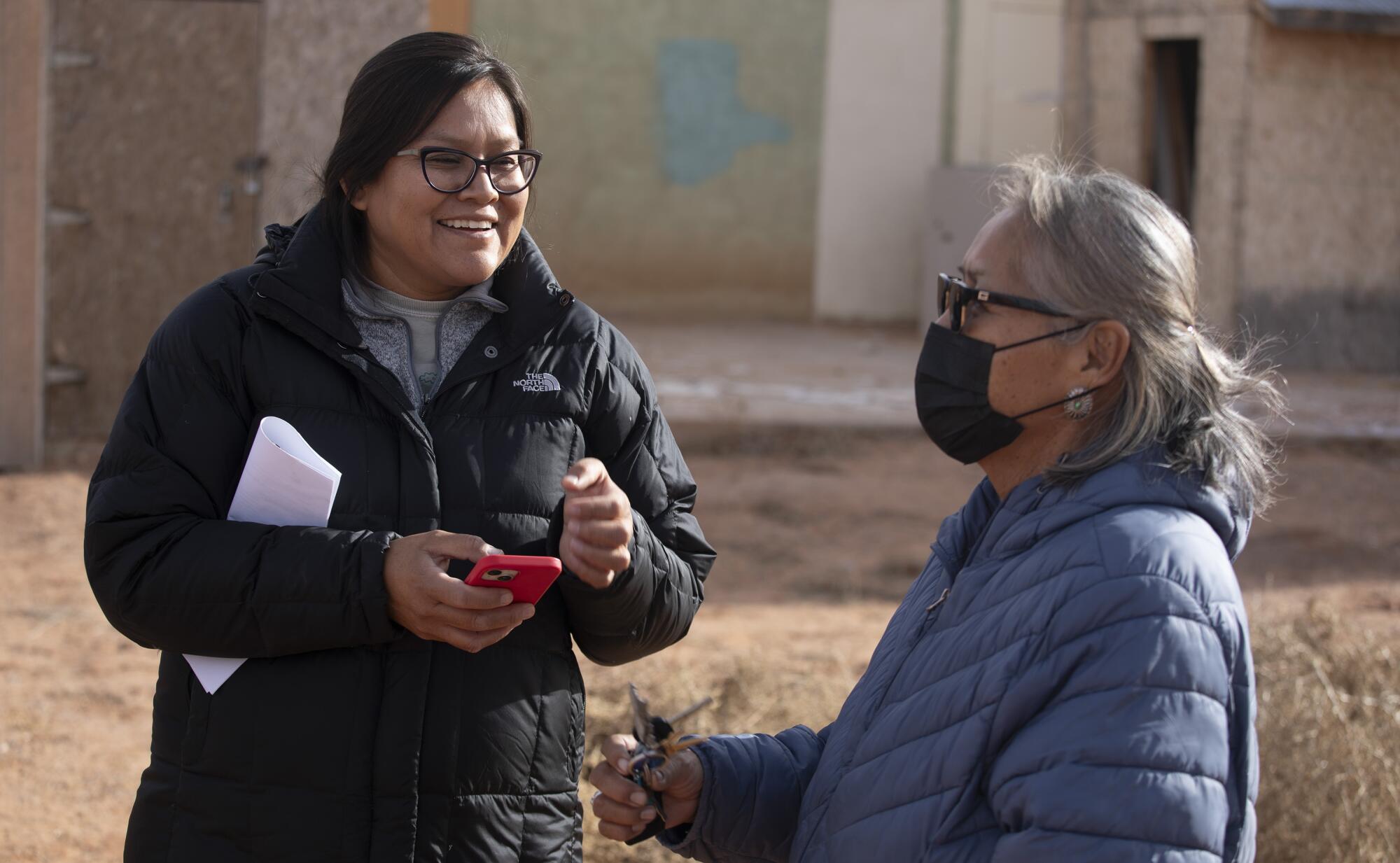
Yazzie and her neighbors outside the Navajo hamlet of Dennehotso aren’t alone in living with water scarcity. An estimated 30% of households on the Navajo reservation don’t have indoor plumbing, and many who live in remote areas have to power their homes with generators because they’re also not connected to the power grid.
During a signing event in the tribal capital of Window Rock, Ariz., Navajo Nation President Buu Nygren said the water agreement is especially meaningful for residents on the reservation who are forced to haul water simply to access a basic necessity of life. In some cases, residents share water supplies with relatives and friends, while others get relief from nonprofits that offer free water system installations.
While the deal has been a long time in the making, the effort to bring safe drinking water into tribal members’ homes has taken on a new urgency in recent years due to droughts caused by climate change, the coronavirus pandemic and the battle among Southwestern states to secure their share of water from the river basin.
The Wilton Rancheria tribe have fought for years to reclaim stolen lands. A 77-acre parcel outside Sacramento is theirs once more.
The country’s volatile politics and the looming presidential election are also top of mind for Indigenous leaders. The tribes will need both congressional approval and a presidential signature before the new agreement can take effect.
Some tribal officials see the Democratic administration of President Biden as more favorable to water rights claims and the protection of ancestral lands than Biden’s predecessor and presumptive Republican nominee, Donald Trump, though both as president have acted in support of expanding water access. In 2020, the Trump administration backed a deal between the Navajo Nation and Utah that settled all water rights claims in state and authorized about $220 million in federal funding to help build water infrastructure. Since Biden took office in 2021, his administration has directed hundreds of millions of dollars to Indigenous tribes for water projects.
In 2023, however, the majority-conservative U.S. Supreme Court dealt a blow to Navajo efforts to expand water access when it ruled that the federal government is not legally obligated to aid in the building of pipelines and other infrastructure to bring safe drinking water to reservation residents.
“Last year it was a hit to the belly that the (U.S. Supreme Court) was not going to help us,” Nygren said at the signing ceremony. “But now we have our own attorneys, water experts, hydrologists, and we can figure out how much water belongs to us.”
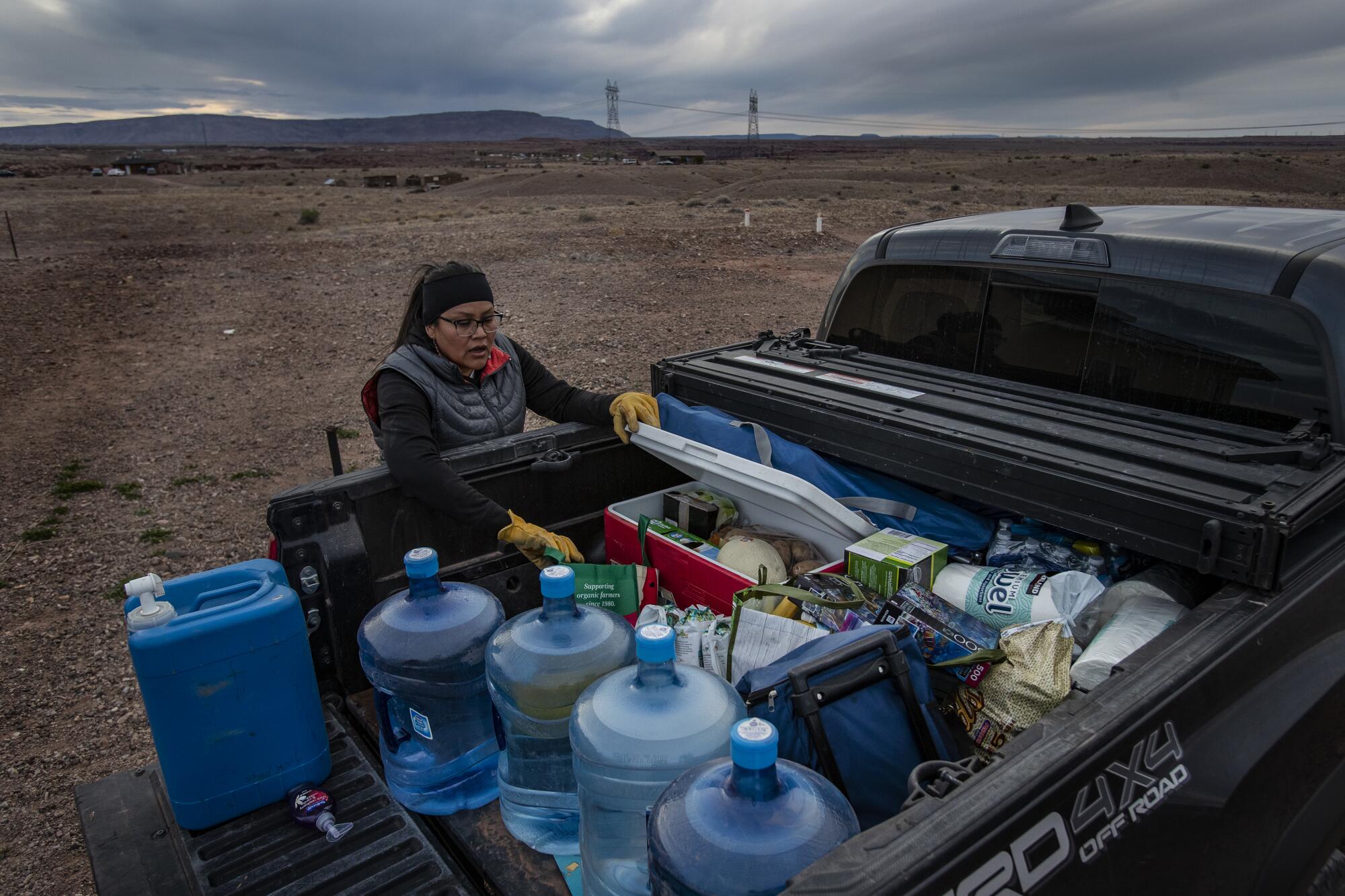
Under the finalized agreement, the Navajo will receive “a substantial amount of the Colorado River Upper Basin water, some Lower Basin water, all groundwater underlying the Navajo Nation, all surface water that reaches the Navajo Nation from the Little Colorado River, and all wash water that reaches the Nation south of the Hopi reservation,” according to the Navajo Nation Council.
The deal calls for the federal government to allocate $5 billion toward the building of critical infrastructure to link the territory’s surface water and groundwater sources to the communities that need them. It also gives the Navajo the flexibility to move Arizona water from the Colorado River’s upper basin to the lower basin and to divert water in New Mexico and Utah to Navajo communities in Arizona if that’s the closest source to those residents.
“Obviously, living on the Navajo reservation, we don’t have boundaries — this is just one piece of our homeland — so building out large infrastructure for water, sewer and electric lines, that’s huge,” said Joelynn Ashley, who chairs the Navajo Nation Water Rights Commission and represents areas that border the river.
Indigenous Californians want President Biden to establish a national monument in a stretch of desert that is both an ecological wonder and a window into their cultures.
Ashley said that while many Navajo have long depended on groundwater, contamination from uranium and arsenic, as well high salinity levels, make some of it unsafe to use. And some wells simply don’t yield enough water to meet demand.
“We just want to be able to use all of our water because we’ve got a lot of places where either water quantity or water quality is not there,” Ashley said.
Yazzie says the arrival of pipelines and water pouring from a tap in her home could not happen soon enough. She’s looking forward to the day when she doesn’t have to drive 16 miles each way to fill up on water for her family, as well as her 18 cows, 15 goats and two horses.
“It’s a hassle,” she said.
